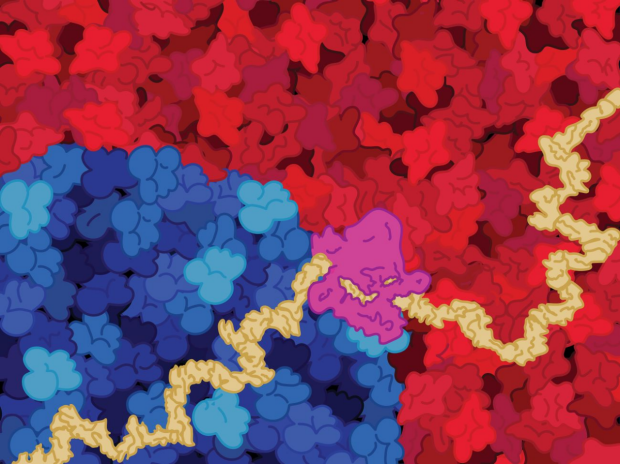A neural network that can explain how it generates predictions has been developed by a group of computer scientists from New York University. The research sheds light on a process that has mostly been hidden from users by explaining how neural networks—the machines that power artificial intelligence and machine learning—work.
 An artist’s rendition of a biochemical model inspired by an interpretable neural network. Image Credit: Elizabeth Speiser
An artist’s rendition of a biochemical model inspired by an interpretable neural network. Image Credit: Elizabeth Speiser
The innovation focuses on a particular use of neural networks that has gained popularity recently: resolving difficult biological questions. These include investigations into the subtleties of RNA splicing, the study’s main focus, which is involved in converting DNA information into functional RNA and protein outputs.
Many neural networks are black boxes—these algorithms cannot explain how they work, raising concerns about their trustworthiness and stifling progress into understanding the underlying biological processes of genome encoding. By harnessing a new approach that improves both the quantity and the quality of the data for machine-learning training, we designed an interpretable neural network that can accurately predict complex outcomes and explain how it arrives at its predictions.”
Oded Regev, Study Senior Author and Professor, Computer Science, Courant Institute of Mathematical Sciences, New York University
Based on what is previously known about RNA splicing, Regev and the study’s other authors—Susan Liao, a faculty fellow at the Courant Institute, and Mukund Sudarshan, a Courant Ph.D. student at the time of the study—built a neural network.
They created a model that enables researchers to track and quantify the RNA splicing process, from input sequence to output splicing prediction—the data-driven equivalent of a powerful microscope.
Regev stated, “Using an ‘interpretable-by-design’ approach, we have developed a neural network model that provides insights into RNA splicing—a fundamental process in the transfer of genomic information. Our model revealed that a small, hairpin-like structure in RNA can decrease splicing.”
Through a series of trials, the researchers verified the insights their model offers. These findings corroborated the model's prediction: Splicing stopped once the RNA molecule assumed a hairpin form, and it resumed as soon as the researchers destroyed the hairpin structure.